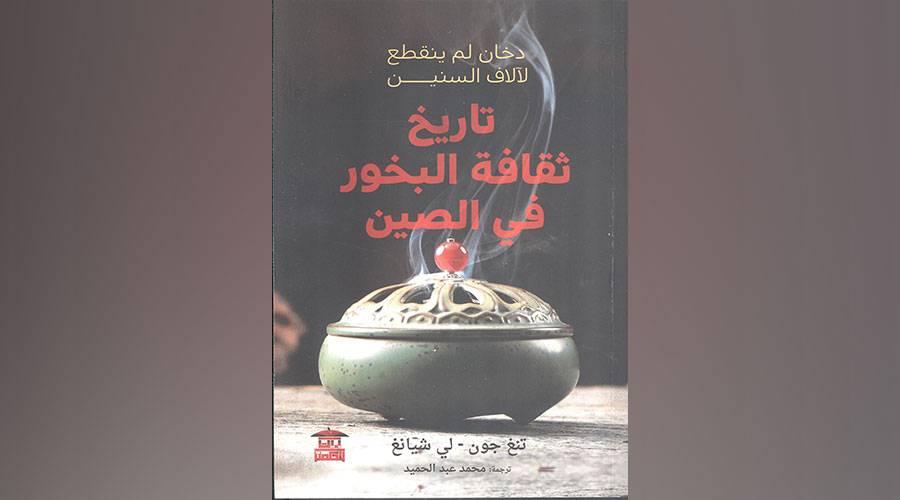The Chinese incense culture has two main paths: the first is incense intended for sacrifices, and the second is designated for the uses of daily life. It is important to show respect to the spirits, and it is also important to take care of yourself. Lighting incense was a daily habit. Indeed, among the ancient Chinese, the day began with burning incense. In the morning, small and large incense burners are lit at home by children who go to school or by the owner of the house himself.
The book “The History of Incense Culture in China” by its authors Teng Jun and Li Xiang, published by the House of Wisdom and translated by Muhammad Abdel Hamid, explains that in addition to daily life affairs, burning incense also plays an important role in sacrificial ceremonies, in local customs, and in healing and saving people, as well as Worship, when normal life stops, all that remains are burdensome patterns and exorbitant prices.
In fact, the use of incense in China since ancient times was for the purpose of reducing the sense of presence. It represented a realistic method, and was not a form of play or entertainment. Unlike the culture of agarwood, which is unique to Japan, the materials and supplies of incense commonly used in the Chinese incense culture are not Not only are they cheap, but they are also easy to obtain, including the Chinese wormwood plant and others. The ancients also respected agarwood and sandalwood, so they stressed that “the absence of agarwood and sandalwood is not permissible.” This background represents the cultural traditions of harmony, moderation, and expediency.
The book indicates that the incense culture that began in the pre-Qin period had reached its peak, led by the imperial family in the Western Han Dynasty, and the main incense varieties flourished to a level equivalent to what was basically available, and with the use of incense in the Han Dynasty, wonderful expressions were formed, Leaving behind many tales and allusions, which have been passed down over the years.
The incense culture during the Tang Dynasty was at its peak and peak of prosperity. It not only left behind wonderful and charming incense tools, but it was also credited with generating more varieties and types of incense. In the Song Dynasty, images changed, and writers and bureaucrats appeared on the scene of incense sciences. This is a huge social impact, and whether the development was related to the support of previous royal families or religious support, the greatest achievements in terms of research and development of incense and experiments with its use were at the hands of Emperor Wen Zong and his family.
Since the Ming and Qing dynasties, writers have lived in isolation, and have been unable to separate themselves from incense. They have left many notes on studies related to it, and it was a period in which contributions to this field increased greatly. Although there are many scholars specializing in incense, The culture of incense in society has begun to turn into a formality.
*civilization
The book believes that if the benefits of incense are divided into three levels, they will be as follows: First, health care, such as maintaining health, treating diseases, sterilization, disinfection, and removing worms and unpleasant odors. Second: Nourishing the body and mind, including refreshing the mind, meditating for joy, or even just trying to smell pleasant scents. Third: Developing virtue, meditating in silence, and participating in the philosophy of enlightenment.
The book points out that the relationship between incense and us is in fact much closer than we think, explaining that: “Thousands of years of incense culture accompany us silently, and are deeply ingrained in our genes, whether we realize it or not. Things like sweeping the graves of relatives to remember them, or Visiting temples to burn incense does not require research and study to realize it. Rather, we will naturally accept the culture behind it and practice it out of tradition.
Incense is not only fragrant smoke, but an entire civilization that spreads throughout human history, embodying the lives of the ancient Chinese, drawing the features of their eras, and depicting lively scenes of the lives of the wealthy, the aspirations of the poor, and the imaginations of intellectuals and poets. The cultural and civilizational narrative of China throughout its ages has not been devoid of the overwhelming presence of incense. It was not just a means of recreation or enjoying perfume, but it was also a prominent indication of social class, a specific landmark for the ruling class and the wealthy class, and it was also a constant companion of writers, poets and intellectuals.
This book is the first of its kind that deals with, in some detail, everything related to the culture of incense in one of the oldest civilizations of the ancient world, which is the Chinese civilization, including the history of the use of incense, which was associated with transcendence, until it became a means of worship among the classes of society, as it highlights. The book: How did incense become an essential commodity that supported trade relations between China and the countries of the ancient world, via the Silk Road? It also deals with the secrets and mysteries of the composition of incense and aromatic herbs, the types of incense burners, methods of preserving incense, and the development of its industry throughout history.
